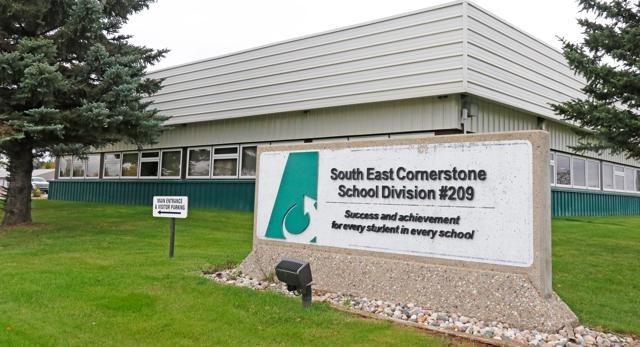WEYBURN – Varied. Diverse. Disparate. Pick a word.
Sometimes the straight-ahead model of teaching and learning gets more complicated and that’s when educators and other professionals like Tracey Kiliwnik jump into the fray. They sort things out and apply measured and data driven support to ensure the South East Cornerstone Public School Division (SECPSD) rises to the mission statement level of providing, “success and achievement for every student in every school."
It isn’t easy but by providing inclusive environments, co-operative techniques and a caring attitude, 237 students within the division’s student population of over 8,000 who have intensive needs receive the assistance required to help them achieve various degrees of success and accomplishment.
Kiliwnik was in the SECPSD head office main conference room on April 24 to outline the sundry programs and materials used to meet the needs of these students to help them move forward with assistance provided by classroom educators, as well as other coaches, trainers, consultants and pathologists.
The intensive need student population this academic year climbed to that 237 mark from the previous year’s total of 209. Kiliwnik said several kindergarten-level youngsters with additional needs entered into the Cornerstone system.
“It’s not always a sign indicating more complex needs,” she explained.
Diagnosis from medical and other professionals enter into the equations as the students come into the SECPSD programming environments.
Citing several examples, Kiliwnik noted that, for example, children with autism have increased. There are now 87 within the division.
“This is the most I’ve seen since I’ve been in this job,” she told the board members during an afternoon presentation that was included in their open business session.
Students with physical impairments do not always require intensive needs support, but rather, close monitoring.
Fielding a number of questions from the engaged trustees, Kiliwnik was joined by director of education Keith Keating on occasion to run the board members through some examples of assistance.
“We are careful, but we have a really good process,” Kiliwnik noted, with regulation-tiered intervention supports that are “well received by classroom teachers.”
Some students are enrolled in alternate education pathways, some in functionally integrated programs and some in diverse needs supports in inclusive classrooms that are, in turn, supported by specially trained instructional coaches, occupational therapists, or speech and language pathologists.
The division also retained the services of an instructional coach for technology that helps significantly in rolling out the services.
The learning supports co-ordinator said students with intensive needs can often be put under duress through such simple things as flickering lights or other room settings or classmate distractions.
Kiliwnik also reported how the professionals pick up “little tools we use on the way to stay focused and teach that to the kids.”
Sensory rooms are made available in schools, and she stated these are not alternative work sites, but rather spaces where young students can retreat with assistants. Sensory carts for general classroom use are also made available.
The presenter went into some detail during her one-hour visit with the board to explain such things as the exterior and interior senses structures and what can negatively affect the child such as over or under stimulation of one or more of these senses. Teachers and trainers learn how to notice internal body signals that may lead to an emotional moment. It’s a “What do we see? What can we do?” situation, she added.
The data collection chart was also explained as she asked the board “to keep in mind we are focusing on sensory, not behaviour,” in those instances.
The sensory rooms are therapeutic spaces with specific equipment and activities designed to promote sensory processing, self-organization and positive change, she said, citing practices conducted by others earlier. She added they are used as preventative strategies not as punishment or to be used as a playroom or timeout space, but to provide specific sensory activities to enhance engagement.
Kiliwnik provided a short video that helped explain the use of the sensory rooms and the materials found within them.
The connective cycle of biological, emotional, cognitive, social and prosocial were used as an example to enforce the well-known guide established by Dr. Stuart Shanker, that “there is no such thing as a bad kid, or a kid who cannot learn to self-regulate in a manner that promotes growth, and no such thing as a trajectory that cannot be changed …”
Kiliwnik concluded her presentation with an explanation of Jordan’s Principle, based on the memory of Jordan River Anderson from Norway House Cree Nation, who was born with complex medical needs and who did not receive required services due to political interjections and government squabbling over payment for care. He never left the hospital in which he was born and died there shortly after.
“A lot is still politics,” Kiliwnik said, but the child-first principle is rooted in substantive quality.
Jordan’s Principle is now a legal rule that requires the federal government to respond to needs of First Nations children to access services when needed. Kiliwnik outlined how those principles are enacted in SECPSD.
She then thanked the trustees for their questions and support for this ongoing program and its deliveries.



